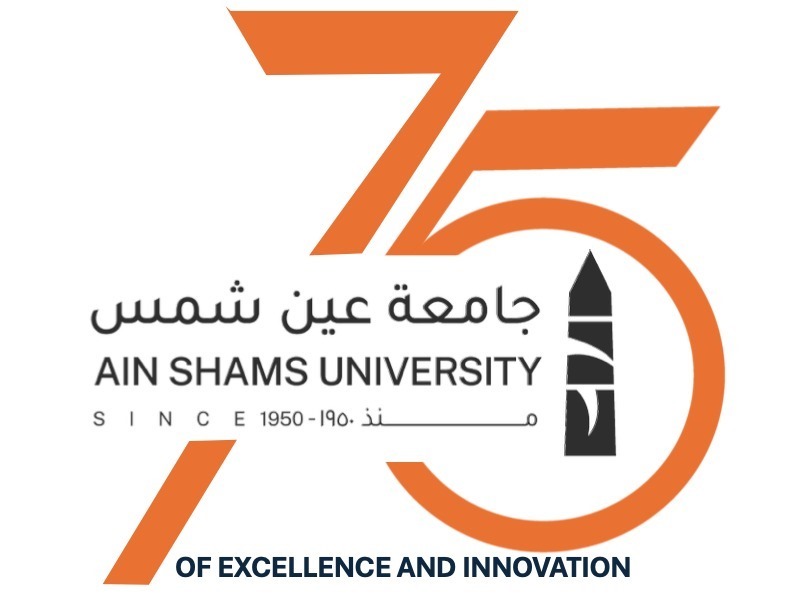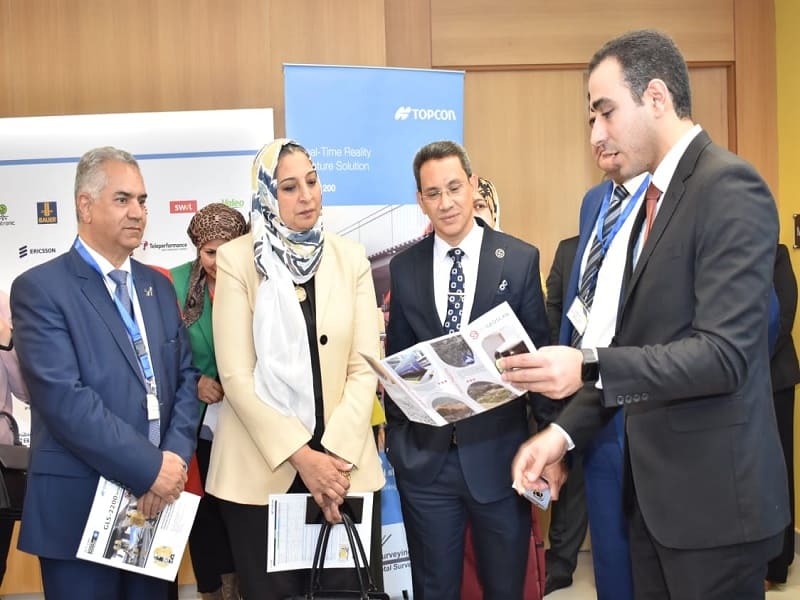The launch of the tenth international conference of the Center for Papyrus Studies and Inscriptions "Antiquities and Heritage of Upper Egypt Cities and Villages"
Today, the activities of the tenth international conference of the Center for Papyrus Studies and Inscriptions at Ain Shams University, entitled Antiquities and Heritage of Upper Egypt Cities and Villages, were launched, in the presence of Prof. Ghada Farouk, Vice President for Community Service and Environmental Development, Prof. Hossam Tantawi, Dean of the Faculty of Archeology, Prof. Ahmed Al-Shawky, Vice Dean of the Faculty of Archeology for Postgraduate Studies and Research, Prof. Iman Nusair, director of the Center for Papyrus Studies and Inscriptions.
Prof. Ghada Farouk, Vice President for Community Service and Environmental Development, indicated that her specialization in the field of urban planning is closely related to antiquities, because heritage includes architecture, crafts, and heritage is the memory of cities, and it includes buildings, crafts, and cultures, it also constitutes an important part of Egyptian identity, as it expresses the formation and origin of society.
Pointing out that Egypt is rich in the diversity of heritage, as Nubia is distinguished by a heritage different from the oases, as well as the heritage of the cities of Upper Egypt, in a unique harmonious manner that is difficult to find anywhere else, praising the choice of the title of the conference and its importance.
Stressing the importance of maximizing the use of antiquities and marketing them well, especially in the level that is full of antiquities, and using modern technology to maximize the benefit from heritage and antiquities.
Also, Prof. Hossam Tantawy, welcomed the attendance at Ain Shams University, which is one of the oldest and most important Egyptian universities in the arena of academic institutions, pointing out that the Faculty of Archeology has become in a short period of time a destination for all concerned, scholars and researchers in the various fields of archeology.
He added that today's conference is held under special circumstances that fall within the inauguration of a promising age for the faculty under a new administration and an extension of nine previous conferences. In its tenth edition, it bears the title Antiquities and Heritage of Upper Egypt's Cities and Villages, in line with the state's tendency to pay attention to Upper Egypt within Egypt's vision to achieve the goals of sustainable development 2030.
Where the choice of this title comes out of full awareness and great awareness of the importance of Upper Egypt, and then it is necessary to shed light on its historical, civilizational, social, economic, and political role as revealed by the axes of this conference and the research papers presented to it.
His Excellency added that the conference includes 5 sessions, during which 19 speakers from different disciplines ancient Egyptian, Greco-Roman, and Islamic will speak.
Prof. Ahmed Al-Shawki, Vice Dean of the Faculty of Archeology for Postgraduate Studies and Research Affairs, explained that today's conference, which comes under the title Antiquities and Heritage of the Villages and Cities of Upper Egypt, Upper Egypt, Upper Egypt, Tribal, or Southern Egypt, refers to one geographical and social unit, which it has gained due to being the highest geographically in Egypt, due to the flow of the Nile from the south to the north, Upper Egypt extends geographically from Aswan in southern Egypt to the Giza Governorate, which is the last governorate of Upper Egypt before the governorates of Lower Egypt began from Cairo. Upper Egypt is characterized by authentic customs and traditions, which are evident in the manifestations of daily life and social and religious events.
He added that due to this geographical diversity and the accompanying historical and heritage diversity, the antiquities and heritage of the cities of Upper Egypt were chosen to be the title of the conference, which includes Upper Egypt from Aswan to Sohag, in order to make room for more specialized studies on this region, provided that the next conference is singled out from the rest of the governorates of Upper Egypt or Central Egypt, which extends from Assiut to Giza. Our conference this year comes as part of the plan of the Faculty of Archeology, which is in line with the efforts of the state and Ain Shams University to pay attention to Upper Egypt, whether in research fields or through community service in terms of allocating many comprehensive development convoys.
Prof. Iman Naseer, Director of the Center for Papyrus Studies and Inscriptions, indicated that the success and prosperity of Egypt throughout the ages, starting from prehistoric times until the early Islamic age, proved that successful wise management is one that invests in the genius of place and people to establish a great civilization, which is what actually happened nearly 4500 years BC ago is still continuing until now, represented by the renaissance movement the country is witnessing for sustainable development in 2030, and since Upper Egypt has become on the sustainable development agenda to achieve a decent life for its citizens and one of its most important axes, and since the sustainable development strategy adopted by the Ministry of Tourism and Antiquities, which is based on achieving the sustainability of the two activities tourist and archaeological sites, increasing the effectiveness of their economic, social and environmental effects, enhancing the competitiveness of the Egyptian tourist destination, and maximizing the benefits accruing to it and the national economy from these two activities, the idea of the conference came about.
She added that the conference aims, with its various axes, to shed light on the villages and cities of Upper Egypt with its antiquities and heritage, while drawing attention to the importance of archaeological areas in them, and this is through research that has been carefully selected by a scientific committee specialized in its field.


.svg)




